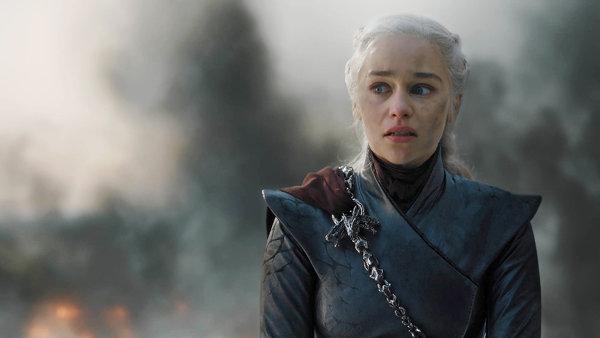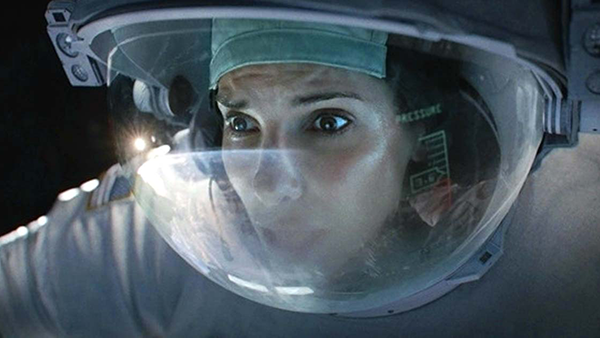I have not been watching Game of Thrones like the rest of the universe. However, I’ve been paying close attention to reactions from the final season, since Game of Thrones creators Benioff and Weiss will be taking over my beloved Star Wars going forward. What everyone seems to be so upset about is that one of the main characters, Daenerys, made a major turn in the last episode that goes completely against her character. Staying with Star Wars, a certain other director who shall remain nameless (his name rhymes with Sighin’ Cronsohn) made a similar mistake in The Last Jedi, where he had the beloved Luke Skywalker act in a way he never would.
All of this got me thinking about one of the oldest questions in writing. Why are endings so hard?? Here’s how I see it. In a well-told story, everything is leading up to a clear resolution. For example, if your movie is about a cop in a building trying to stop a band of terrorists, the resolution is most likely going to be him stopping the terrorists. The problem is that if you give us the exact resolution we’re expecting, we’re going to be let down. For this reason, writers try to give us a different, unexpected resolution. Luke Skywalker refuses to fight Kylo Ren. Daenerys turns into the female Hitler. Unfortunately, it’s really hard to give us an ending we had no idea was coming and it still make sense. The whole point of your story is to set up what’s going to happen in the end. Now you’re telling us none of that was relevant?
Today I’m going to share six tips that should help you avoid making giant mistakes like this. Use them separately or combine them to create the ultimate ending super-weapon.
I’ll start with the most obvious and, unfortunately, most boring solution. IF WE LIKE YOUR CHARACTERS, WE’LL LIKE YOUR ENDING. It’s rare that I watch a movie where I love the characters and hate the ending. That’s because when you’re invested in the characters, you care more about them than some well-crafted plot twist. Look at Die Hard. Die Hard has a standoff between the hero, the villain, and the hero’s wife. It is a scene we have literally seen hundreds of times before. There’s nothing exceptional about the moment at all. The ending works purely because we love John McClane, we detest Hans Gruber, and we love John’s wife. Whatever occurs here, as long as our hero wins, we’ll be happy. So start by writing characters that we love.
You could extrapolate the flip side of this to The Last Jedi. Not many people liked the Luke Skywalker Rian Johnson created. He was crabby, defeatist, unhelpful, annoying, and drank green milk from a wildebeast’s teet. It could be argued that the dye was already cast for the ending. We disliked Rian’s Luke so much that it wouldn’t have mattered what he did.
Solution number 2 for a strong ending is the CLIMAX OF A PERFECTLY CONSTRUCTED CHARACTER ARC. This means that you’ve set up a well-defined flaw in one of your main characters, you have explored your character bumping up against that flaw the whole movie. And then, when the final battle occurs, they break through and overcome it. The best example of this I’ve ever seen is The Matrix. And I say that because the movie’s climax takes place in the most boring setting possible – a hallway – and it’s still amazing. The reason it’s amazing is because it’s all about Neo’s character arc. He spent the entire movie struggling with his belief in himself (his flaw), and now, when the pivotal moment arrives, he believes, and is thus able to defeat the villain.
Solution number 3 is MAKE IT IMPOSSIBLE – The problem with a lot of writers is there’s this sort of uninspired inevitability to their story. We know where they’re going because they make it so insanely obvious that that’s where they’re going. From there it’s just a matter of connecting the dots. Take us through beat 1, to beat 2, to beat 3, and the movie is over. The way to conquer this inevitability is to make things IMPOSSIBLE for your hero. I’m talking you make it so difficult EVEN YOU DON’T KNOW HOW THEY’RE GOING TO DO IT. Then, and only then, is your hero’s success going to have the enormous impact you’re looking for. Take a look at the last 20 minutes of Gravity. Even though you’re watching a Sandra Bullock film, at every turn it seems like there’s no way she’s going to survive.
Solution number 4 is the SUPER PAYOFF – Audiences LOVE payoffs. They’re cinema crack. Therefore, one of the trickiest, yet most effective, ways of creating a great ending, is to pay off all those setups you’ve been planting throughout your script. And if you haven’t been planting setups to pay off in your climax, what are you doing? The two films I’ve seen do this better than anyone else are Back to the Future and The Shawshank Redemption. It’s payoff after payoff after payoff after payoff. Where was the payoff in Luke’s final trickery in The Last Jedi? I’ll give you a hint. There wasn’t any. Which is why it was so lame.
Solution number 5 is a DIFFICULT CHOICE(S). If characters have easy choices in your ending, you probably don’t have a good ending. A huge part of what makes an ending great is the uncertainty behind it. There are no easy answers. There are no quick solutions. Your hero is going to have hard choices to make. The most famous example of this, of course, is Casablanca. But you can see it in a lot of movies. There’s a great moment at the end of The Mule where the cartel tells Clint, “That’s it. If you deviate one more time, we put a bullet in your head.” And on that very mission, he learns that his ex-wife is sick in the hospital. She’s probably going to die. Does he finish the mission? Or go see the mother of his children and grandchildren before she’s gone forever?
Finally, solution number six is MINING EMOTION FROM THEME – This is really hard to do since theme can often work against you. By this I mean, you can have great story ideas but have to abandon them because they aren’t extensions of your theme. The worst thing that can happen is you sacrifice everything to service a weak theme. This is what happened at the end of The Last Jedi. Rian Johnson was trying to push some complicated theme that only made sense if you read a 3000 word Last Jedi think piece on the internet, and as a result, we lost what could have been one of the most epic lightsaber battles ever. However, when you do this right – when the elements gel together – it can be magical. Pixar does a better job of this than anyone. Their movies are theme-heavy, but the difference between them and Johnson is that their themes are incredibly simple. At the top of the heap is Toy Story 3, which pushes the theme of “moving on.” Closing out the movie with a scene of the toys being given to a new child who could love and enjoy them just as much as their previous owner was the most emotionally satisfying way we could’ve concluded that theme.
It should go without saying that, like everything in movies, your gut plays just as strong a part in nailing your ending as these tips. You could follow any one of these suggestions and come up with something lame. If it doesn’t FEEL right, you probably want to go in a different direction. Good luck. And feel free to share your own “ending” tips in the comments.
Carson does feature screenplay consultations, TV Pilot Consultations, and logline consultations. Logline consultations go for $25 a piece or $40 for unlimited tweaking. You get a 1-10 rating, a 200-word evaluation, and a rewrite of the logline. If you’re interested in any sort of consultation package, e-mail Carsonreeves1@gmail.com with the subject line: CONSULTATION. Don’t start writing a script or sending a script out blind. Let Scriptshadow help you get it in shape first!



